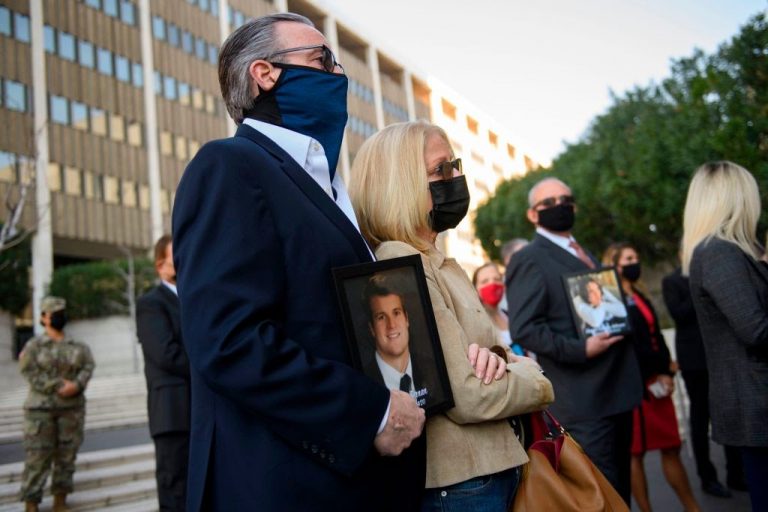The latest preliminary data published by the Office of the Chief Medical Examiner for San Francisco shows that over twice as many Americans died from drug overdoses than from COVID-19 in 2020.
The cause of death of 708 San Francisco residents was attributed to drug overdoses, while 254 deaths were associated with COVID-19 during the same period of time.
During the first three months of 2021 alone, 454 accidental overdose cases were reported by the Office of the Chief Medical Examiner for the City and County of San Francisco. 251 were considered “other causes” and do not count as deaths. Among fatalities, 200 are considered “Accidental Overdose Open,” a term defined as cases that “do not have a final cause and manner of death,” with only three being closed cases.
The report shows that 87 percent of deaths were male, 50 percent were white, 28 percent were black, and 16 percent were Latino. 56 percent of the deaths occurred in the age bracket between 35 and 64.

The latest preliminary data published by the Office of the Chief Medical Examiner for San Francisco shows that over twice as many Americans died from drug overdoses than from COVID-19 in 2020.
Success
You are now signed up for our newsletter
Success
Check your email to complete sign up
Of the 454 total overdose cases, 141 were attributed to fentanyl, 115 to methamphetamine, and 67 to cocaine use. Only 28 were reported for heroin and medical opioids each.
Fentanyl is an opioid that is mostly distributed in the U.S. by Mexican cartels who manufacture using precursor chemicals imported from entities associated with the Chinese Communist Party, according to Wall Street Journal. Fentanyl began showing up in San Francisco as recently as 2015. However, in just a few years, the drug has found a large market.
According to WSJ, only 254 people died from Corona Virus Disease 2019 (COVID-19), the disease caused by the SARS-CoV-2 virus, in San Francisco in all of 2020.
The danger of fentanyl comes from its high potency. In fact, fentanyl can be up to 100 times stronger than morphine, thus attracting people looking for a higher high.
Kristen Marshall, project manager for the Drug Overdose Prevention and Education Project (DOPE Project), told SFGate that the pandemic ended up isolating many people that had a high risk of falling into drug addiction, “The root causes of overdose are not being sustainably addressed in San Francisco…We are sort of talking about the deep root causes in larger conversations…On top of that, the drug supply is really strong. And the sheer chaos people are living in — living in poverty, living in supportive housing, living with trauma — remains.”
Many users tend to smoke fentanyl, thinking that it lowers the risk of overdose compared to injecting the drug. John Negrete, a harm-reduction program manager at Glide, told WSJ that normally, they couldn’t get people to smoke opioids because it is a wasteful method. But with fentanyl, people are willing to smoke it as it is “just so powerful.”
The increasing use of fentanyl in San Francisco can be inferred by the numerous seizures made by the police. In the neighborhood of Tenderloin, police seized 1.2 kilos of fentanyl in 2019. Last year, this number jumped up more than four times to 5.5 kilos. During the first 12 weeks of 2021, almost 2.8 kilos of the opioid has already been seized.
CDC data
The latest data from the U.S. Centers for Disease Control (CDC) also underline the fact that drug overdose deaths have surged during the pandemic. During the 12-month period between October 2019 and September 2020, there was a 29 percent rise in the number of overdose deaths reported in the United States, with over 87,000 fatalities, the highest number since the opioid crisis began in the 90s. A significant portion of the deaths can be attributed to fentanyl and other opioids.
One factor increasing the rate of overdoses is drugs laced with fentanyl or other stimulants. Lacing is a practice done to pad dealer profits. However, since a user addicted to methamphetamine or cocaine will not have a tolerance built to opioids, the risk of overdosing increases significantly.
In a press release dated April 7, the CDC and the Substance Abuse and Mental Health Services Administration (SAMHSA) announced that federal funding can be used to buy rapid fentanyl test strips (FTS), a move that is aimed to reduce accidental overdoses. Users can use the FTS to determine whether their drugs are “mixed or cut” with fentanyl.
A vaccine for opioid overdose
Among the many attempts to combat opioid deaths, a rather novel research in this area is being conducted by Sharon and Ofer Levy, professors at the Harvard Medical School. They are currently in the process of developing a vaccine that can potentially prevent fentanyl from triggering overdose deaths.
The study has been awarded a $25 million grant by the National Institute of Health, and is presently enrolling youth in the 15 to 25 age group who suffer from Opioid Use Disorder. The vaccine has yet to proceed past its animal testing phase, however, but development plans to conduct Phase I clinical trials at Boston’s Children’s Hospital.
















